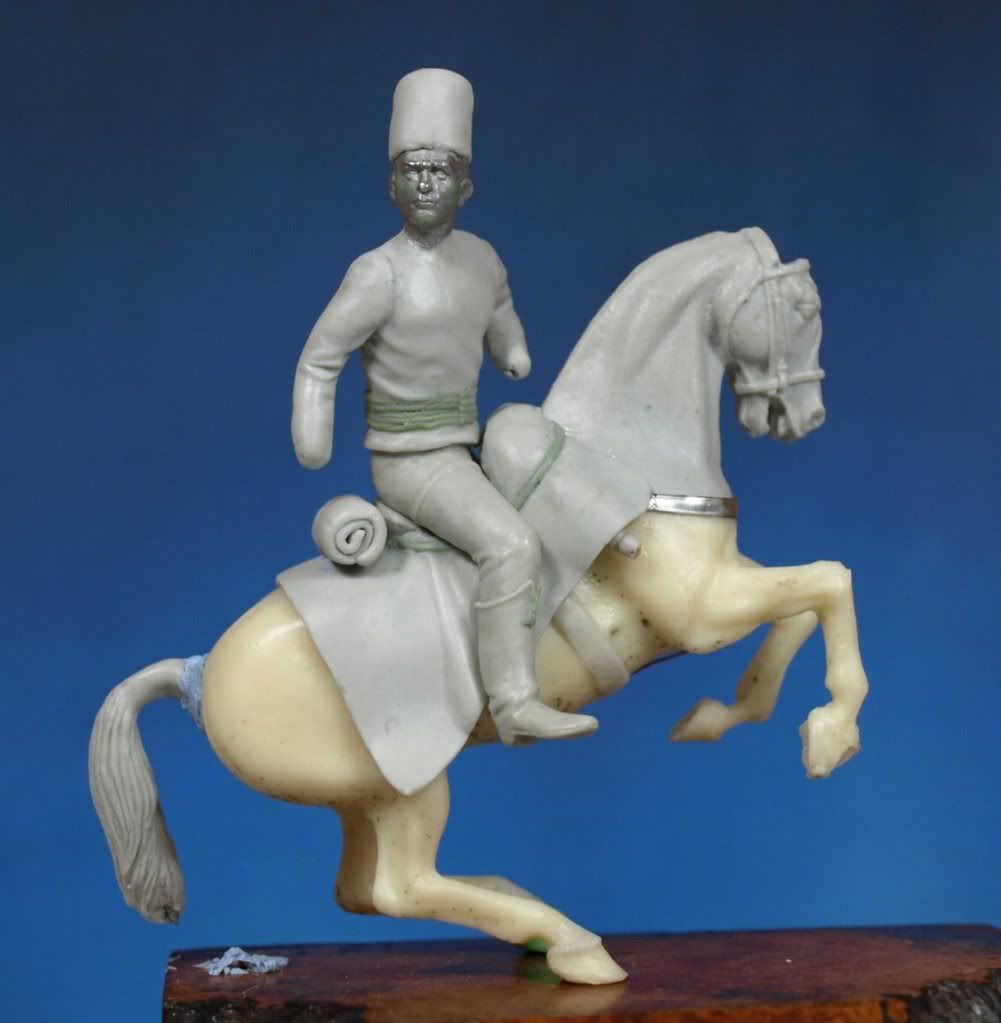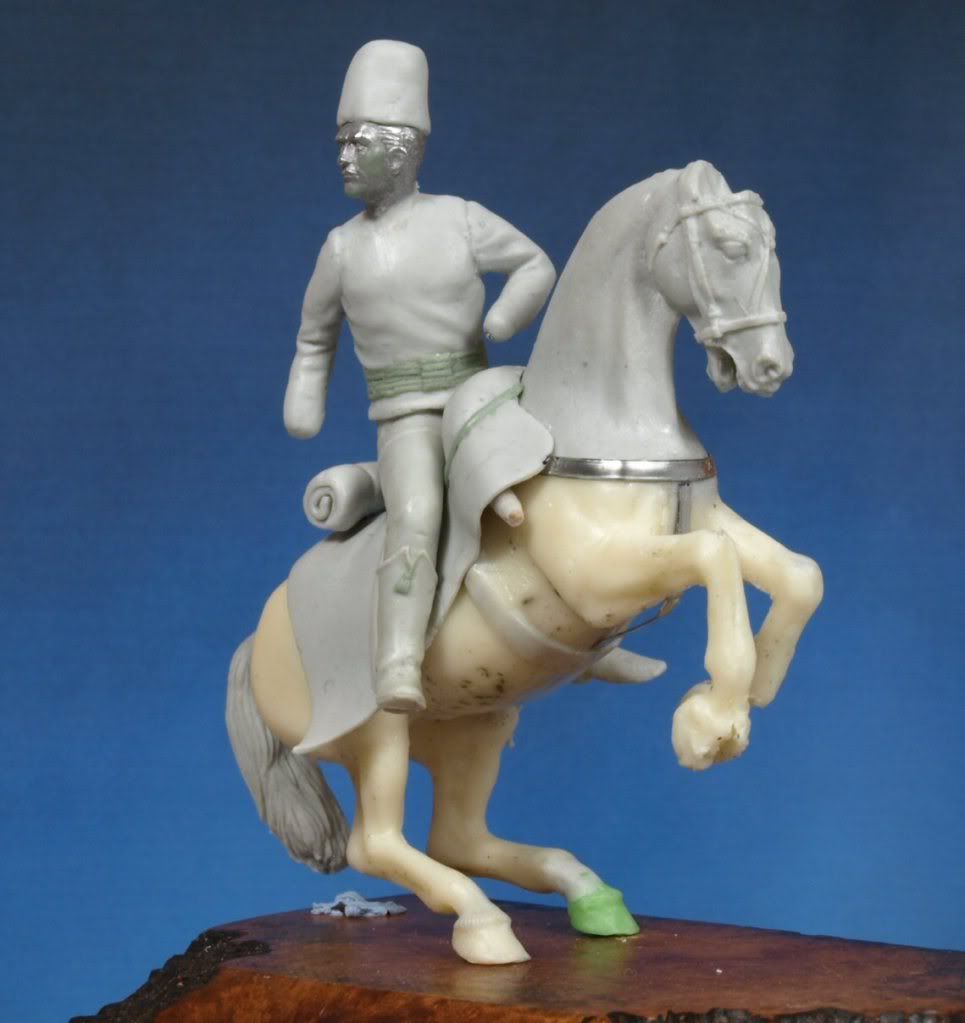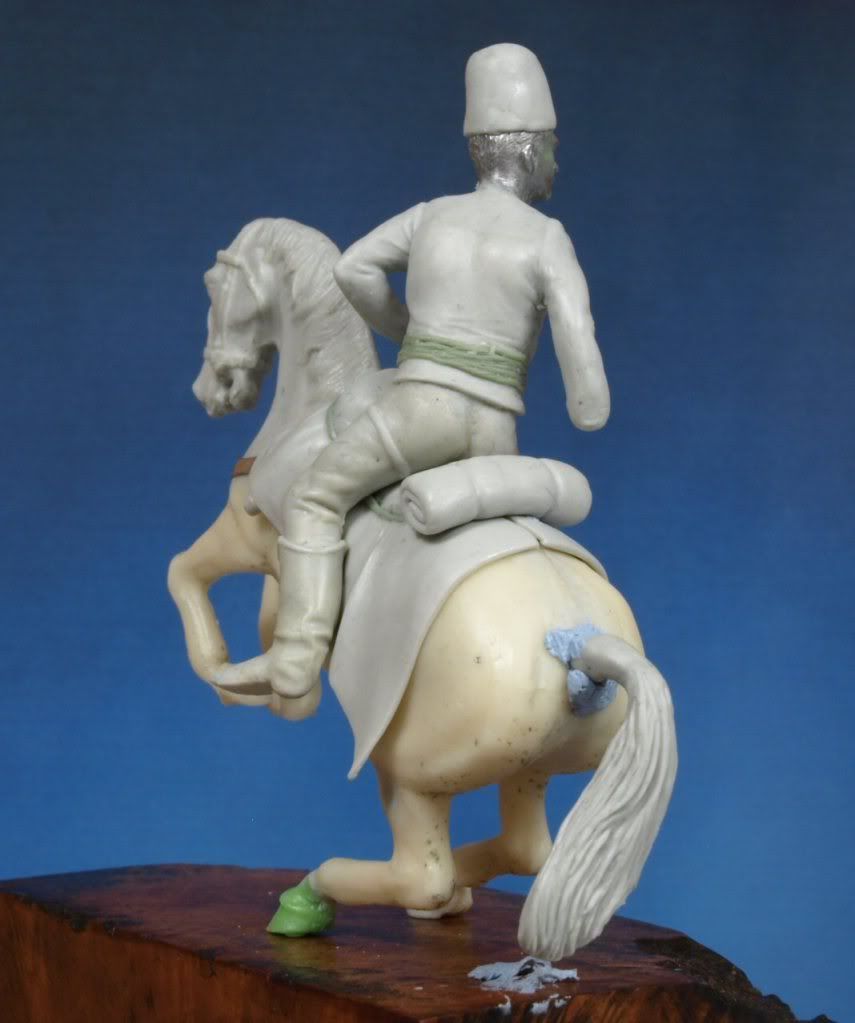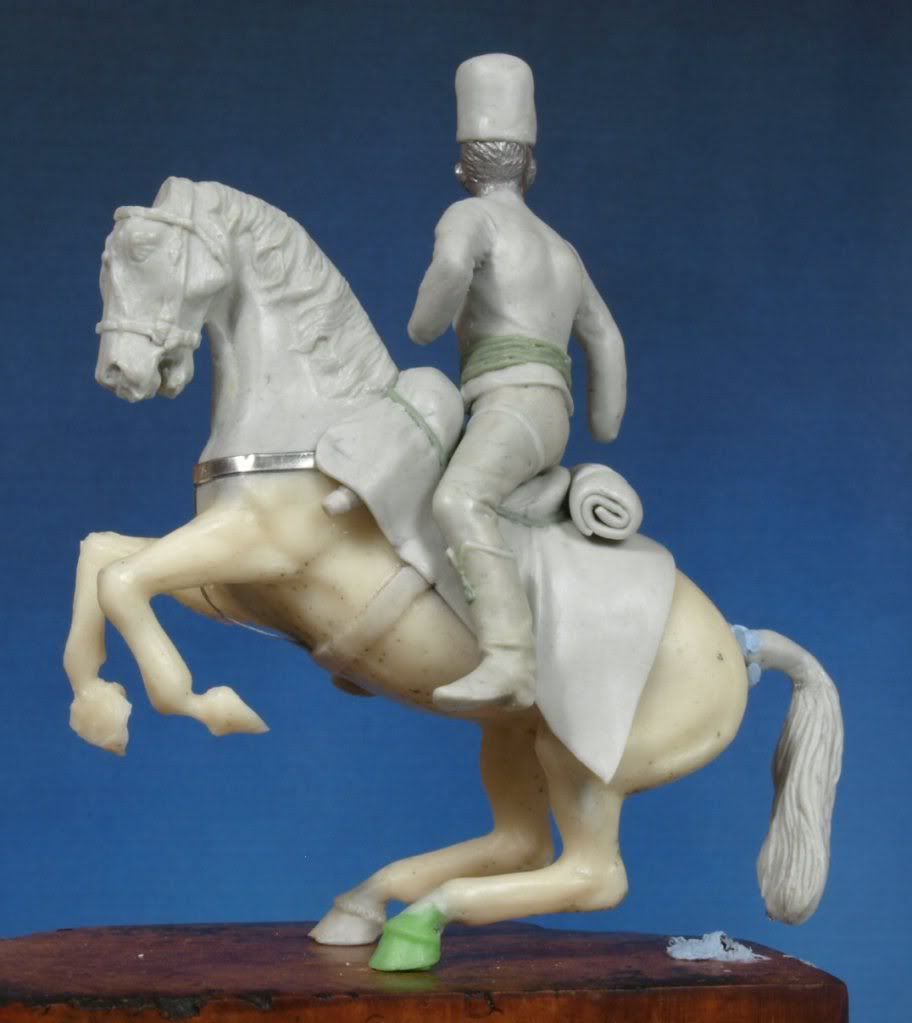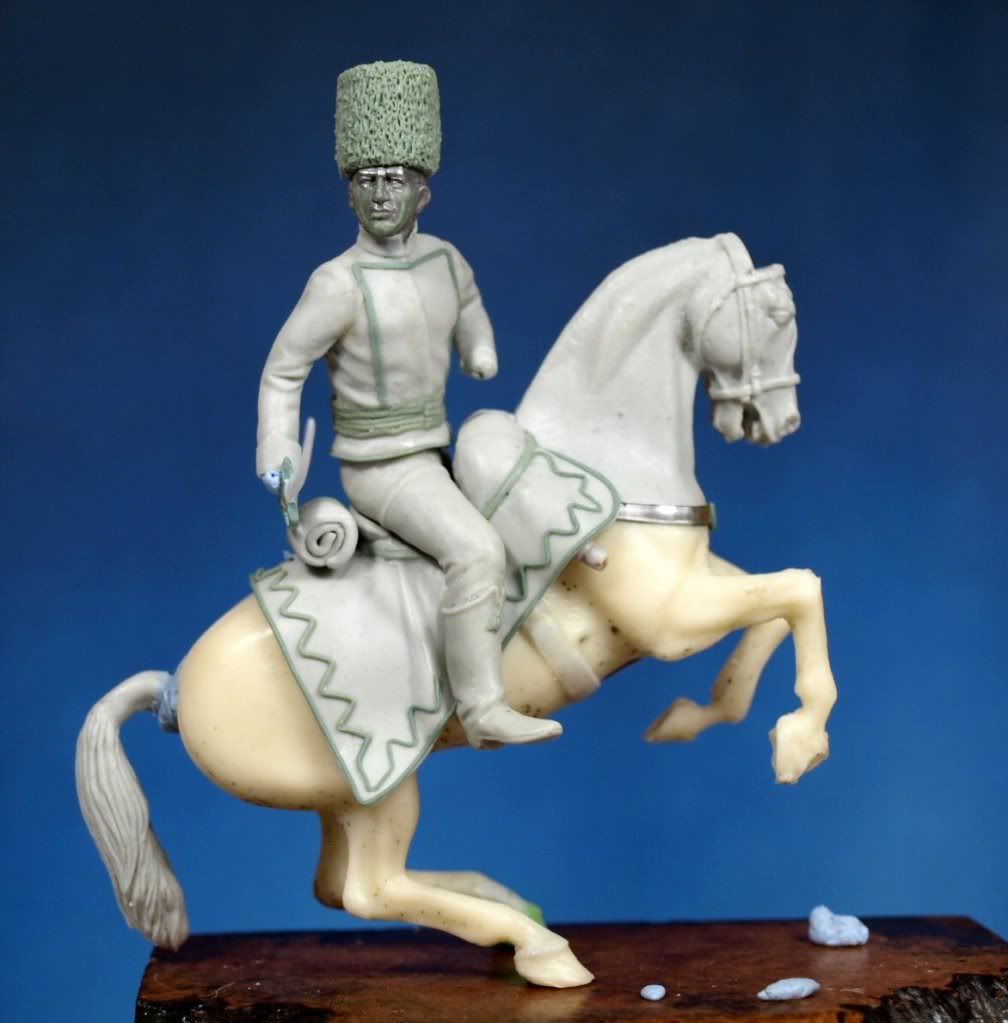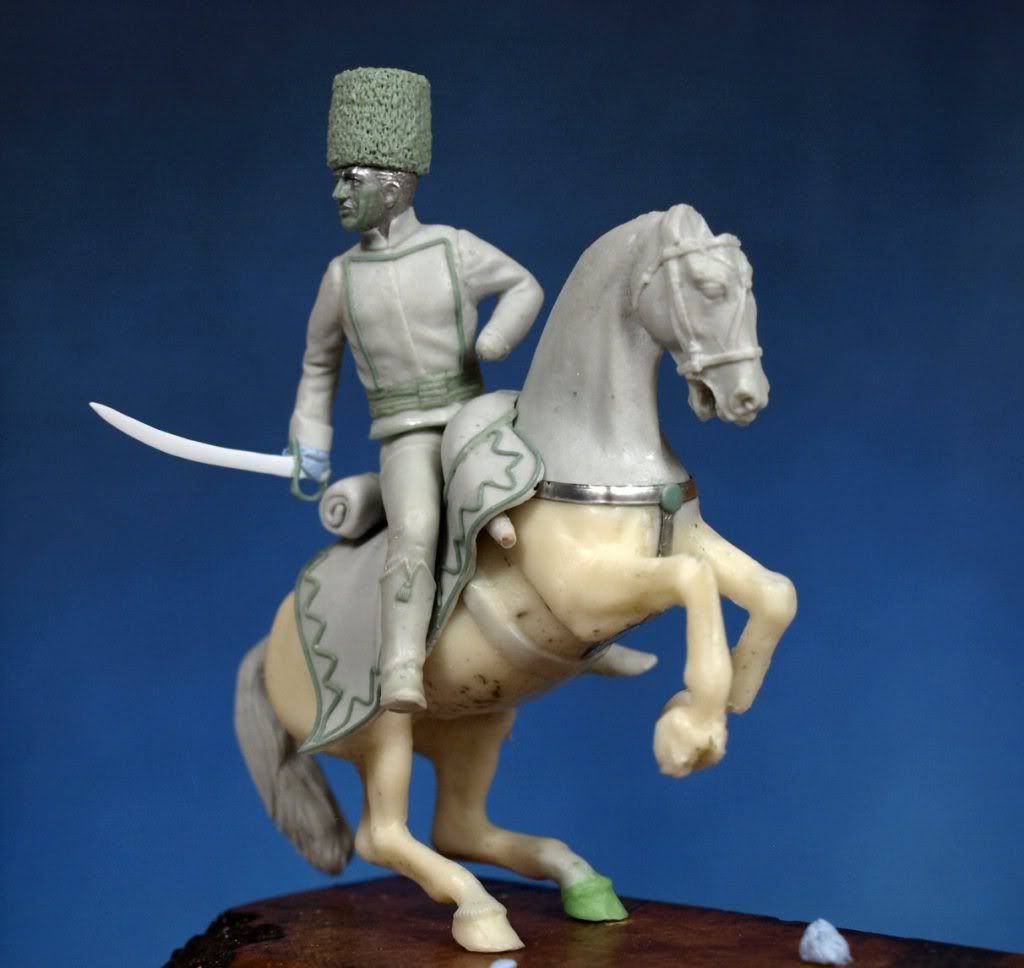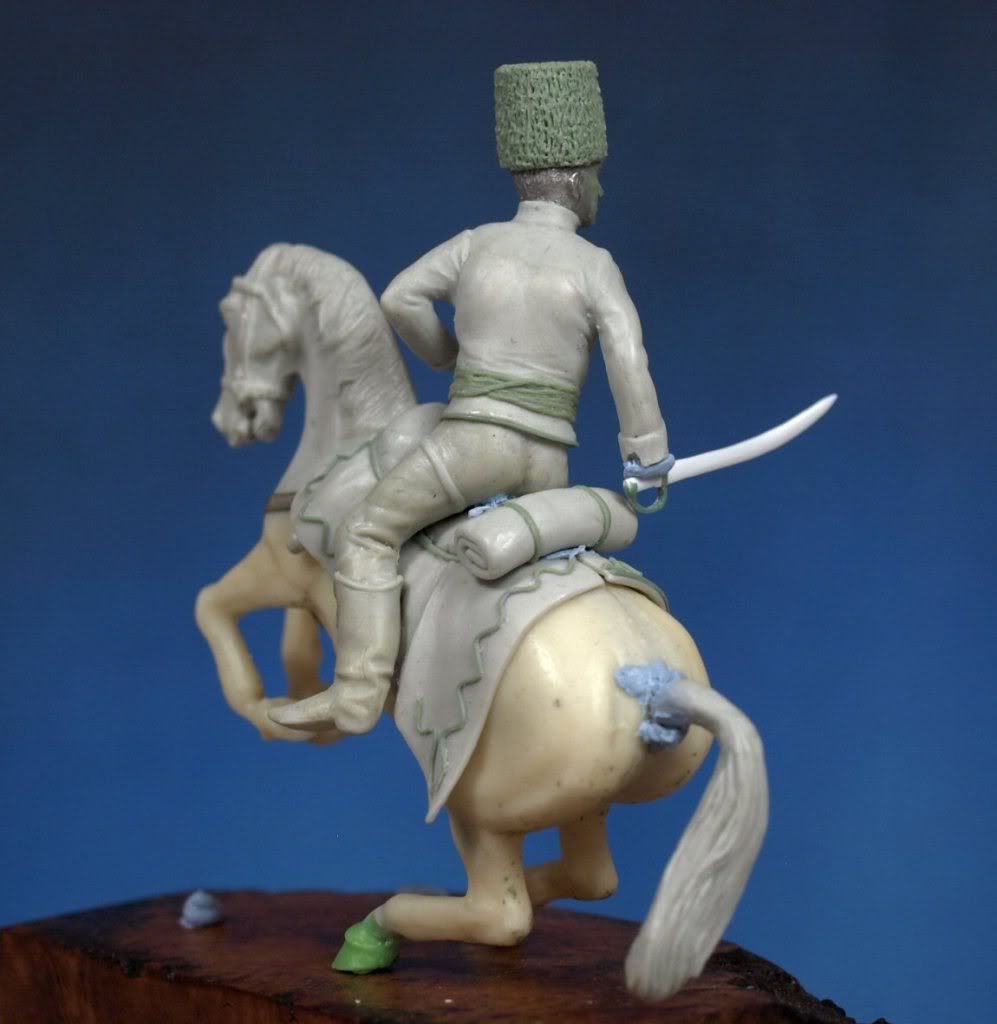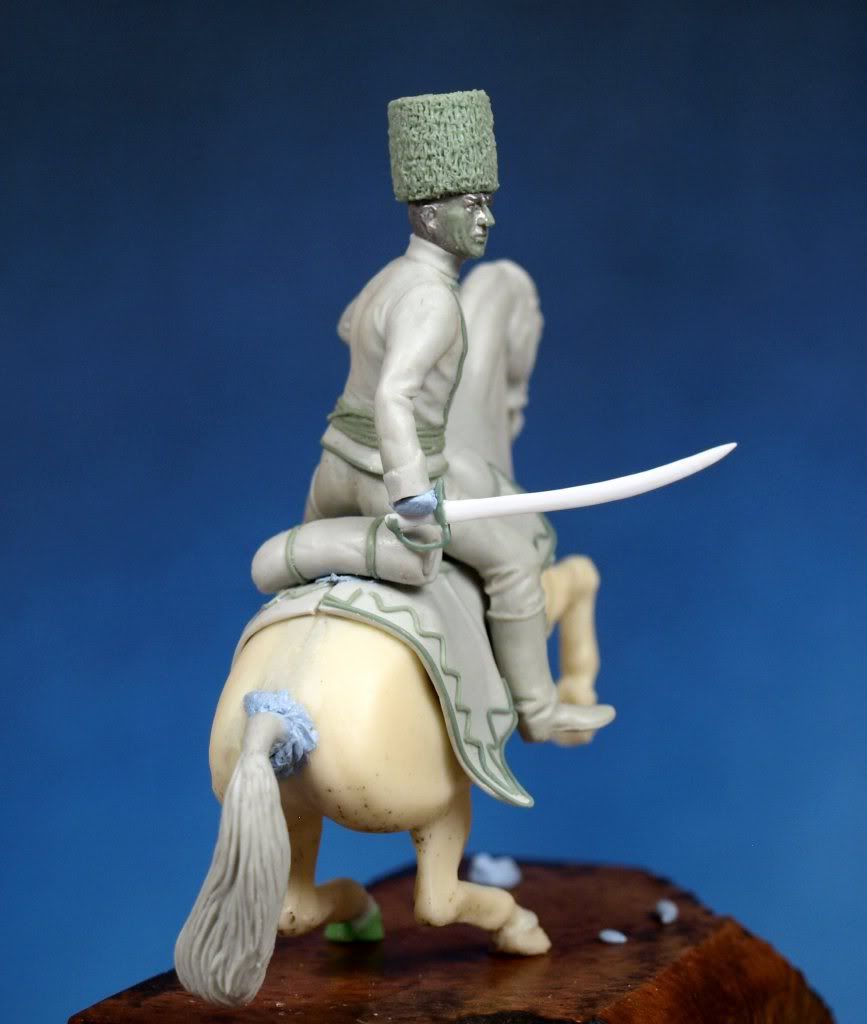Marcel,
May I make some comments on the horse?
Your work is beautiful but I see a few things here and there that might help. I hope I'm not too late since I just caught this thread.
Your horse is just a tad short in the back which is making the rider look a bit large for him. The head and neck are gorgeous! You have the horse correctly flexing at the poll. YAY! It's hard to tell from the photos but the neck might be a bit short as well (I'm comparing the length of the spine in general to the size of the barrel, chest and hindquarters.)
I'm not really as familiar as I'd like to be with the tack of the period but double check the placement of the girth on the saddle. I believe it's too far back which affects your rider's position, the right leg is also too far back, if he's not careful he'll hit the horses flank with his leg and he will be on a bucking bronco. If you look at the horse from the side, you've sculpted the heartgirth correctly on the horse (nice job!), the place right behind the front legs, just before the barrel expands outward. That is the place with the girth needs to go and it fits naturally there.
My biggest concern is the hindquarters and back legs. And it's something you see all the time in sculptures as a whole. The horse is rearing with the weight of the rider on his back. He's supporting literally hundreds of pounds between his body and the rider on those two back legs. But there is no sense of weight or gravity. The horse's muscles and joints need to be stressed in this position, the weight needs to be coming down into those back legs.
I hope you don't mind but this photo demonstrates what I mean.

The muscles in the hindquarters of your horse are large and rounded, too much so. Those muscles should be contracting and lessening that rounded shape.
Even though the horse in the picture doesn't have his weight evenly distributed on both hind legs, you can still see the stress of his muscles and joints. Rearing to a horse is like us doing a handstand, it requires strength and balance. Those muscles and joints are working hard.

This horse doesn't have a rider and he's going upward rather than up and forward like your horse and the horse above. Without the extra weight and forces, his muscles aren't working as hard but they're still working. His weight is sinking down into the hip, hock and pastern.
The key to this will be the angle of the horse's hip and the line that goes down the stifle to the hock. The hock needs to show that flexion and torque. The line down the cannons leads to the pasterns and fetlock, those also need to show torque and flexion but to a lesser degree. They aren't as "up" as the ones on your horse.
I hope this make sense and I also hope you don't mind me posting this, this is just something I spotted. Over all I think the sculpture looks fantastic and I can't wait to see it finished.
Cheers,
Karrie

